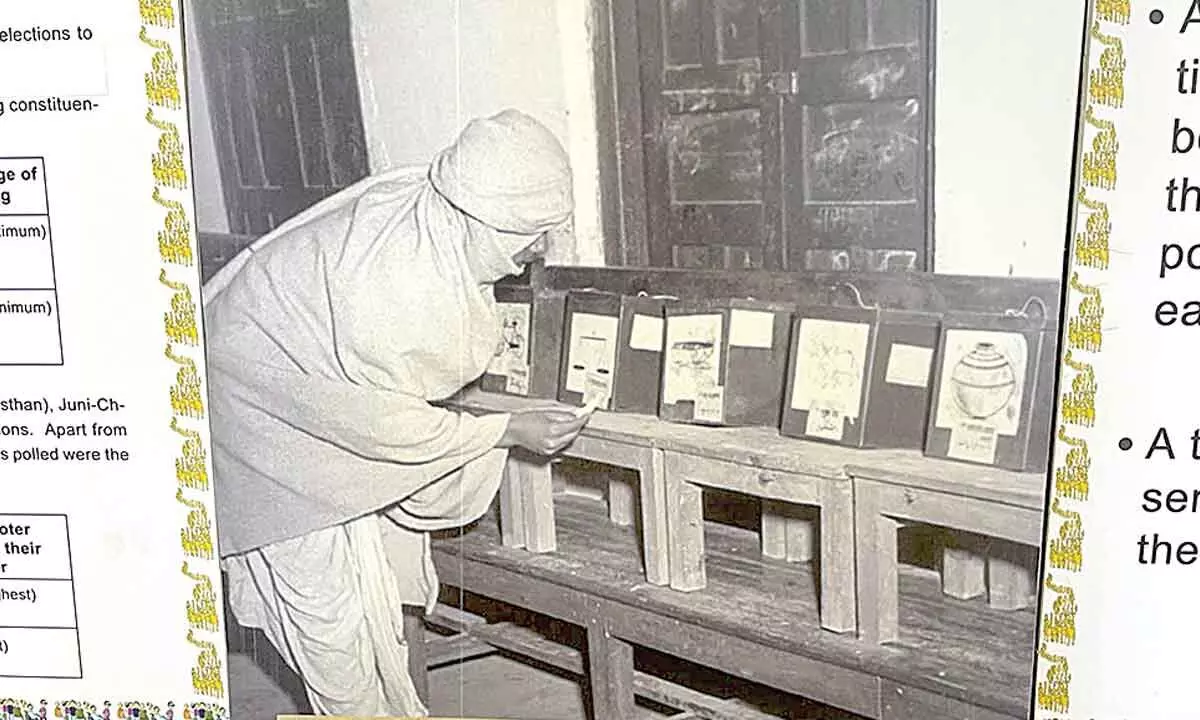First LS polls: When EC struck off names of voters enrolled as someone’s mother, wife

According to an official report on the first general elections published in 1955 out of close to 80 million women voters in the country then, “nearly 2.8 million eventually failed to disclose their proper names and the entries relating to them had to be deleted from the rolls”.
New Delhi: While preparing the electoral rolls for India’s first Lok Sabha polls, the Election Commission faced a peculiar problem. In some states, many women voters had enrolled themselves by their relationship with the male members of their family instead of providing their own names.
Special efforts were made to raise public awareness about the issue and such women voters got a special extension to have their names added to the electoral rolls for the 1951-52 polls. However, out of close to 80 million women voters in the country then, “nearly 2.8 million eventually failed to disclose their proper names and the entries relating to them had to be deleted from the rolls”, according to an official report on the first general elections published in 1955. It also stated that “practically, all such cases were from the states of Bihar, Uttar Pradesh, Madhya Bharat, Rajasthan and Vindhya Pradesh”.
Cut to the 2019 Lok Sabha elections, the country saw a record 67.4 per cent voter turnout, along with the highest-ever women voter turnout of 67.18 per cent. Male turnout in the polls was 67.01 per cent. These statistics do not just tell the story of the evolution of India’s electoral democracy in the last seven decades, but also of the emancipation of the country’s women voters who have emerged from the shadows of men folk and in many ways carved a niche of their own.
The Election Commission of India, born a day before India turned republic in 1950, has conducted 17 general elections. But in conducting the first general elections, it had to surmount a host of challenges related to both geography and demography of the country, whose vast majority of voters were then illiterate.
“It came to the notice of the Election Commission during the preparation of the electoral rolls that a large number of women voters had been enrolled in some states not by their own names but by the description of the relationship they bore to their male relations (e.g. A’s mother, B’s wife, etc.). The reason for this was that according to local customs, women in these areas were averse to disclosing their proper names to strangers,” read the polls panel’s report on the 1951-52 Lok Sabha polls.
As soon as the matter came to the notice of the poll panel, instructions were issued that the name of an elector being an essential part of his or her identity must be included in the electoral rolls and no elector should be enrolled unless sufficient particulars, including the name, were given. The Electoral Registration Officers were instructed to replace the description of a woman voter’s relationship with their male relations with her proper name.
Directions were also issued to the effect that any woman who refused to give her proper name should not be registered as a voter and if she had already been registered without the name, the entry should be deleted. The voters were appealed to give the necessary particulars to the Electoral Registration Officers. “A special extension of one month was given in Bihar for filing such applications so that the number of women voters whose names were liable to be struck off the rolls for this reason might be reduced.
“This extension was made good use of and the rolls were considerably improved in that state. Although such an extension was given in Rajasthan as well, the response there was poor and a large number of entries relating to women voters had to be deleted for this defect,” the report added.
Chandra Bhushan Kumar, a former chief electoral officer of Delhi, said asking women voters to declare their own names in the roll was a “very remarkable stand” that was taken by the election commission. “It was a tough decision in those days. But the Election Commission of India took this view and the result is now available to us. Now, in most of the locations, we see that women are voting in more numbers than men, or their percentage is higher than male voters’ percentage,” he told PTI.
According to the report on the 1951-52 general elections, the total number of voters enrolled in the whole of India (excluding Jammu and Kashmir) was over 173 million. Of these, approximately 45 per cent were women voters.
In 2019, the size of the electorate grew to 911.9 million, with 47.34 crore male electors and 43.85 crore female electors, with a gender ratio of 926. While “pink booths” are a well-known feature in elections now, in the maiden Lok Sabha polls, 27,527 booths across the country were reserved for women voters.
India’s first Chief Election Commissioner Sukumar Sen gave a series of talks on the radio which covered subjects like “the General Elections - Democracy’s biggest experiment”, “delimitation proposals”, “citizen voter” and “women citizens” to boost turnout.
In the 2024 Lok Sabha elections, as many as 12 states have more women voters than men, with a total of 47.1 crore females registered in the electoral roll in the country. Chief Election Commissioner Rajiv Kumar, while announcing the poll schedule, said the gender ratio is 948 women to 1000 men in the country which is a “very healthy sign” of women’s participation in the electoral process. Twelve states have more women voters than men, with a total of 47.1 crore females registered in the electoral roll in the country, he said.

















